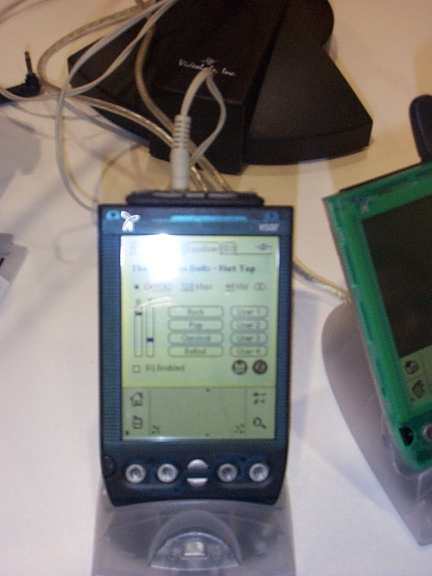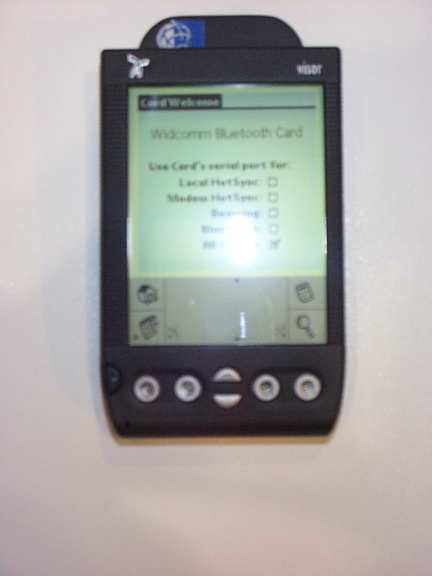
Handspring
Handspring were supposed to ship their new Visor Palm clone shortly before PalmSource; there were certainly models that looked like production models, and kids running around the hall with what they said were production models. However, there were considerable problems with their web site, which was down a lot of the time, and refusing to accept orders most of the rest. Developer orders placed at the show were promised to ship before the end of November, but the combination of circumstances don't make a promising beginning. One caution, though: Handspring are only accepting orders from North America. I asked Jeff Hawkins about it, and he said "we can't handle demand in North America". As an argument, this doesn't hold good - if Handspring can't handle North American demand, then why can't they not handle global demand? I don't think that they have thought through the implications of their position, as is so common with parochial, small town American companies. The same applies to the web site problems: it is better to not have a site at all, rather than to have one that leaves a bad taste in the mouth.
CityTime is part of Visor software

Visor grows MP3 player

Bluetooth working

The Visor runs a 3.x version of PalmOS, and includes a slightly cut down version of DateBk3 (Pimlico Software), and CityTime. As far as I could see, that was the extent of software customisation. The hardware includes a microphone, as well as the Springboard slot. Handspring had their own Springboard modules to show, but no production third party modules. InnoGear had their MiniJam MP3 player, but in a mockup only. It will hold two Compact Flash cards at once, and is controlled by software running on the Visor. The module itself extends over the top of the Visor to present its player controls. The only other module I found was Widcomm's Bluetooth module: a couple of prototypes were there, but Widcomm don't plan to manufacture it themselves, and are still looking for partners. With a PC Bluetooth module (also a hand wired prototype) it could HotSync and make an Internet connection.
Operation of the modules is very interesting: software deinstalls itself when the module is removed, and installs itself again on insertion. Hot swapping of modules is perfectly possible. One important module is a backup module - this saves the contents of RAM to a special Springboard module. This means that Visor users will not be tied to desktop machines for synchronisation, and like Psion several years ago (that comparison again) Visor users will be able to orient themselves around their PDA, rather than a desktop computer. Not that the Visor doesn't have synchronisation - it does, but via a USB port than than serial, at least in the standard devices.
While Palm are feeling pleased with themselves about licensing PalmOS, one of their long-time supporters, TRG, makers of memory expansion modules, have become a licensee. TRG are making the TRGpro, to ship in December 1999, as a demonstration of their design capabilities. It looks a lot like a Palm III, but includes an upgraded speaker (a shame that only Handspring have a microphone) and a Compact Flash slot. Ideally, they would like to sell custom variants of this device to enterprise customers, but are happy to supply developers and other one-off customers from their web site. The IBM 340 Mb Microdrive CF card will run happily in the TRGpro, but battery life is reduced to a few hours. I can think of a lot of applications for this - not least, a copy of Palmtop's Route (akin to their Psion Route Planner) with a full set of maps plugged into to a car power socket.
Words and design by:
Paul Lynch
Last updated: January 24, 2000